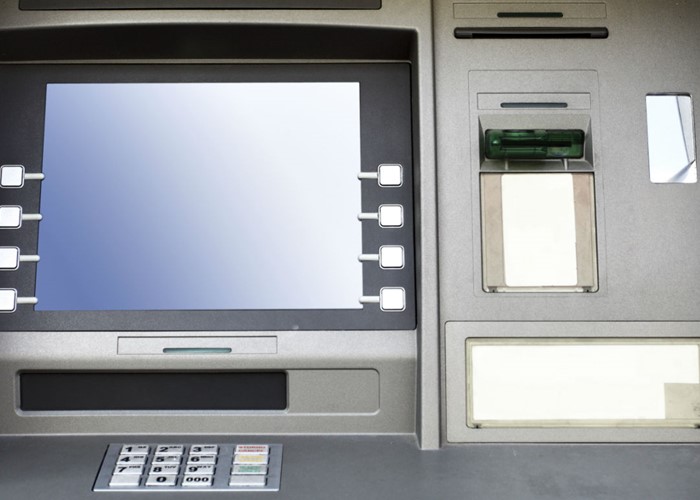Where to find a better bank deal

Greedy banks cost us £430 each in excessive charges and poor service last year, according to a major new survey. We name and shame the banks with the steepest current account fees and charges - and show you how to switch to a better deal
The big banks have raked in £11.2bn in fees, interest and “unfair” charges over the past year, according to a major new study - a staggering sum that equates to an average of £430 for each UK household.
The report - commissioned by trade body Co-operatives UK and think tank The Financial Inclusion Centre - accuses UK banks of “profiteering” at the expense of vulnerable consumers and claims the banking industry is “cavalier and negligent”.
Strong stuff - yet a breakdown of the £11.2bn figure is startling. In addition to the £3.2bn made last year from 'inefficient and excess charges' - such as unauthorised overdraft fees - the report found that the “net margin” between what banks pay out to savers in interest and recoup in interest charges on mortgages, loans and credit cards hit a massive £8bn.
What’s more, the report estimates that the current net margin is at its highest point for a decade. So, are we being taken for a ride? It could be said that some current account customers are getting a raw deal.
The steepest way to borrow
The legal tussle last year between City watchdog the Office of Fair Trading and the banking sector over bank charges highlighted the extent to which both authorised overdraft facilities and charges for unauthorised overdraft borrowing are a massive cash cow for UK banks. The court heard that banks reap a massive £2.6bn a year from overdraft facilities - that represents more than a quarter of their net margin.
Six months on, customers who go into unauthorised overdraft or breach their agreed limit are still being hit hard - although many charges now come under new and different guises.
Nat West and RBS customers with a standard account now pay a ‘maintenance charge’ of £20 when they dip into the red without permission, as well as fees of up to £15 for each paid item. Nationwide’s ‘Flex Account’, meanwhile, charges a whopping £30 unpaid item fee in addition to a £20 unauthorised overdraft charge.
Yet it’s not just unauthorised borrowers who are suffering. In May the average authorised overdraft rate hit a 10-year high of 14.22%, according to figures from analysts Moneyfacts. Four banks - RBS / NatWest, Lloyds TSB, Barclays and HSBC - currently impose charges in excess of 19% for authorised overdraft borrowing, with HSBC steepest at 19.9%.
Recent question on this topic
- barbara legge asks:
I am incensed that as a customer of longstanding with Nationwide BS, I requested a free temporary overdraft and was told it was only for new customers
- MikeGG1 answered "I seem to recall a whole series of TV ads from Nationwide about how other banks put new customers..."
- JoeEasedale answered "No one will offer £6000 free. Having said that, having lots of money in an account that pays..."
- Read more answers
And new fee structures for overdraft facilities could see all of us pay even more in future. In the face of regulatory pressure, many banks have moved to cut their unauthorised overdraft charges - and instead replace them with new blanket daily charging tariffs.
As we reported in Lloyds is ripping its customers off, Lloyds TSB is the latest bank to impose increased authorised overdraft charges for all customers. All customers with a standard ‘Classic’ account will from December 2 pay a £5 monthly usage charge for the privilege of an authorised overdraft.
Experts claim Lloyds will see enjoy a profit boost as a result. “Customers who stick to their agreed overdraft limits will now find themselves worse off thanks to the introduction of the £5 usage fee,” says Michelle Slade of Moneyfacts.
Santander is also moving to change its overdraft charging structure - although they have maintained the distinction between authorised and unauthorised borrowing. Later this year, current account customers who don’t hold a mortgage with the bank will face standard charges of 50p for every day they use an approved overdraft facility to a maximum of £5 a month, with unauthorised charges set at £5 a day to a maximum of £50 a month.
Earlier this year the Halifax and its sister bank, Bank of Scotland, introduced flat fees of £1 for each day people are overdrawn - and for someone who with permission uses their overdraft for a full year that adds up to a staggering charge of 365% APR!
Overdraft best buys
Fortunately, you don’t have to accept additional costs for managing your money and keeping within an agreed overdraft facility if you switch to a best buy standard current account deal. Santander’s Preferred Overdraft Rate Account offers a 0% overdraft for one year, before the rate reverts to a competitive 12.9%. You have to pay £1,000 into the account every month to qualify.
Be aware that charges for unauthorised borrowing on the account are steep – it comes with a £25 ‘Instant Overdraft Monthly Fee’ and transaction fees of up to £35 on unauthorised overdrafts.
The Cahoot Current Account comes with a £100 interest-free overdraft buffer and charges 11.8% APR for authorised overdrafts. Be aware that the account charges a hefty 21.9% for unauthorised overdraft borrowing and is internet-only. Alternatively, the Co-operative Bank Current Account Plus offers a fee-free overdraft facility with a buffer and charges a competitive 15.9% on authorised overdrafts.
Search the latest current account best buys and find out how to make £225 switching your current account. Reclaim control of your finances with our exclusive online banking service!
More: 5 ways to get an overdraft for free | 10 ways to beat your bank!
Most Recent
Comments
-
Mike10613 - a £399 laptop will do most things (shop online, I'm finding Acer ones (AMD Turion) very good value) - though if you don't need one now then buy one when you do as there is always technological redundancy as the features move on.
REPORT This comment has been reported. -
Hi Mike10613 Who do Zopa lend your money to? 7.2% interest is quite high, so I'm guessing there's an element of risk involved. Briefly, how does it work?
REPORT This comment has been reported. -
I don't trust any banks. I just looked at a group that teaches finance to children. They advise taking you interest rate and one I checked for instant access yesterday was 2.6%; you then divide 72 by the interest rate. This gives you the number of years it will take to double your money. 72/2.6 is about 27 years. I put money in to Zopa and will get at least 7.2% interest and so could double my money in 10 years. Of course, there is a problem. I invest £500 now or buy a laptop for £500; or invest and see if I can get a laptop for £1,000 in 10 years time! With technology bringing prices down I think I may just manage to get a laptop even an Ipad for £1,000 in 2020. I feel sorry for you guys who have to wait until 2037!
REPORT This comment has been reported.
Do you want to comment on this article? You need to be signed in for this feature









14 July 2010